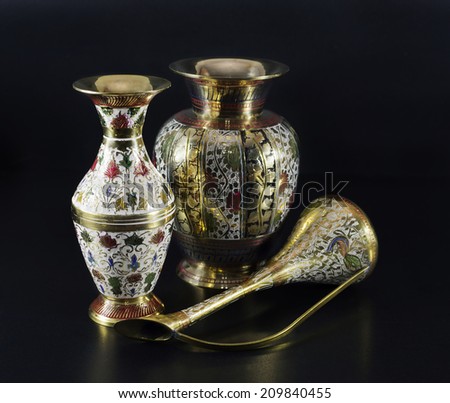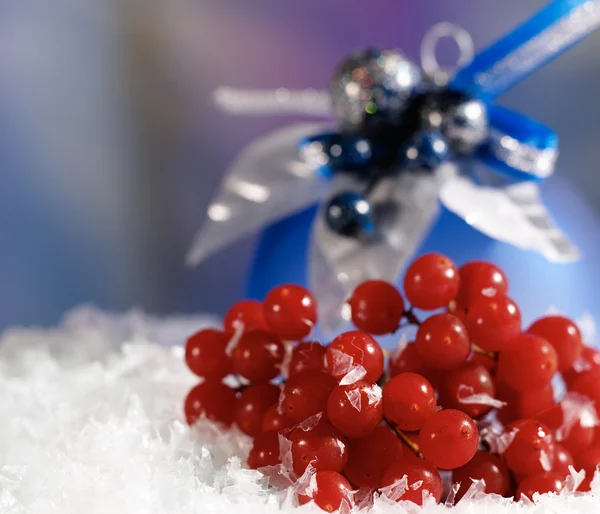I arranged various asian henna objects on a plate with a candle to reflect the henna theme, this photo was taken using natural daylight with soft light from the candle, I decided not to use this photo as although the arrangement looked nice I was struggling to get the right angle on the plate that reflected everything and made it look interesting.
Friday, 21 November 2014
Extra shots - henna theme objects
Traditional brightly coloured asian henna/wedding objects arranged against a dark background, it seemed to work well but with all the small mirrors on the objects it was difficult to balance the light and keep the background black
Garlands - henna theme
Extra shots - traditional asian flower garlands used during weddings and functions etc, arranged and hanging displaying bright traditional colours, although the display was colourful the arrangement didn't really stand out or look that interesting to I decided not to use the photo as a final print.
Final print - henna theme
Final print, using traditional decorated tray which is normally used during henna and wedding ceremonies with rice and a candle decorated with henna against a black background and fast shutter speed to capture the candle in the air and give a slightly different effect.
Henna hand painting
I used this as one of my final prints, again this is in line with the henna theme and using a coloured background and natural daylight, inspired by the images of hands which were used in my research.
Final print - candles
Final print - henna theme
Again working with candles and using the light to bring out different shades of this perfume bottle, this is one of my final prints from the Henna theme and brings together some of the objects that I have studied for my research including glass works and perfume bottles with a slight reflection from the glass table with warmth added by the glow from the candle.
Blogger failure
Site crashed whilst publishing my work and when it started working again, none of my final photo's were being displayed, don't know what the problem is but I am going to have to go over it again and try uploading photographed images through my phone!!!
What a stupid system!!!
What a stupid system!!!
Final Print - candles
Sticking to the original henna theme and experimenting with different lighting, this is one of my final prints using only the lighting from the candles
Final Print
The National Gallery London
Oranges and Lemons 1960s
Another still art painting at the National Gallery, London
Painting has some areas of light which looks as if it is coming from a window, again items from kitchen arranged and used to create this still life painting from the 1960s.
The National Gallery, London - research and inspiration
Oranges and Walnuts - 177
still life oil painting from 1772 using mainly earth tones, dark background and wooden worktop to display kitchen related objects
Thursday, 13 November 2014
Juan Sanchez Cotan - research
Juan Sánchez Cotán (June 25, 1560 – September 8, 1627) was a Spanish Baroque painter, a pioneer of realism in Spain. His still lifes—also called bodegones—were painted in an austere style, especially when compared to similar works in Netherlands and Italy.
http://en.wikipedia.org/wiki/Juan_Sánchez_Cotán
Its interesting to see how the fruit and vegetables were suspended and made to sit inside a frame for his still life paintings.
Book research - still life
One of my least favourite books on still life, didn't really find it very interesting, the author could have added some images to explain his work or techniques.
Vincent Van Gogh - research still life
http://www.vggallery.com/painting/p_0455.htm
Van Gogh envisioned his sunflower works as a series and worked diligently on them in anticipation of the arrival in Arles of his friend, Paul Gauguin. In a letter to Emile Bernard written around 21 August 1888 Vincent wrote: "I’m thinking of
decorating my studio with h
alf a dozen paintings of Sunflowers. A decoration in which harsh or broken yellows will burst against various blue backgrounds, from the palest Veronese to royal blue, framed with thin laths painted in orange lead. Sorts of effects of stained-glass windows of a Gothic church." (Letter 665).
Vincent eventually planned a dozen sunflower works to be hung in the Yellow House which he and Gauguin would use for a studio. "I’d like to do a decoration for the studio. Nothing but large Sunflowers. Next door to your shop, in the restaurant, as you know, there’s such a beautiful decoration of flowers there; I still remember the big sunflower in the window. Well, if I carry out this plan there’ll be a dozen or so panels. The whole thing will therefore be a symphony in blue and yellow. I work on it all these mornings, from sunrise. Because the flowers wilt quickly and it’s a matter of doing the whole thing in one go." (666). Unfortunately, Vincent's race against the changing seasons was unsuccessful and he was only able to complete four sunflower works in August, 1888.
Without question, the most valuable resource with regards to insights into the development and execution of Van Gogh's works are his letters to his brother, Theo, and others. In his typically detailed and precise manner, Van Gogh describes the origin of the first three works in this series: I have 3 canvases on the go, 1) 3 large flowers in a green vase, light background (no. 15 canvas), [A] 2) 3 flowers, one flower that’s gone to seed and lost its petals and a bud on a royal blue background (no. 25 canvas), [B] 3) twelve flowers and buds in a yellow vase (no. 30 canvas). So the last one is light on light, and will be the best, I hope." [C] (666). A few days later Vincent writes in Letter 668: "I’m now on the fourth painting of sunflowers. This fourth one is a bouquet of 14 flowers and is on a yellow background."[D]
The four works mentioned above are noted as "A" through "D" and further details are shown in this table below:
Name Medium F JH Location
A Three Sunflowers in a Vase Oil on canvas 453 1559 Private collection
B Still Life: Vase with Five Sunflowers Oil on panel 459 1560 Destroyed by fire
C Still Life: Vase with Twelve Sunflowers Oil on canvas 456 1561 Munich, Neue Pinakothek
D Still Life: Vase with Fourteen Sunflowers Oil on canvas 454 1562 London, National Gallery
After Van Gogh's mental breakdown late in December in 1888, he would go on to paint three additional copies (F 455, F 457, F 458) of the original four sunflower works.
Quotes in Letters
"You know that Jeannin has the peony, Quost has the hollyhock, but I have the sunflower, in a way." (Letter 741)
"Thinking like this, but very far off, the desire comes over me to remake myself and try to have myself forgiven for the fact that my paintings are, however, almost a cry of anguish while symbolizing gratitude in the rustic sunflower. " (Letter 856)
Dutch - still life
Dutch still life paintings of objects and depicting status and lifestyle
Using mainly earthly tones which blend together beautifully
Pieter Claesz

Still Life with cultural influence
I found the following images when I searched for cultural still life, I like the strong bold colours and the objects clearly reflect culture, its definitely something that I will consider for my project. The image with the women playing the Indian drum is something that I am considering for my major project.













Still Life - composition, black and white
The following photographs are made much more interesting by the way that the items are placed, its also interesting to see how the light is used to light up mainly the bottom of the fruit which adds to the appeal of the photograph and even though the photograph is in black and white, it works really well.


research, camera angle
I think the angle of the object is really important in this photograph, as it makes it much more interesting to look at, the dark shadows and light from one side make it look creepy
Research
This is good book to read if you are thinking about still life photography, helps you think about the image, the space and composition as well as a brief insight into the styles of different still life photographers.
Robert Mapplethorpe, Lucinda's Hand 1985 - research

I have been looking at the work of Robert Mapplethorpe, who was an American photographer mainly known for his black and white work which included portraits and some still life.
I like this image of 'Lucinda's Hand' (1985) as it really stands out against a black background, the image itself is very strong which is probably because of the way its posed.
It reminds me of images that I have seen for promoting henna hand painting.
Wednesday, 14 May 2014
Villain theme
Madonna Louise Ciccone is an American singer-songwriter, actress, and businesswoman. One of the most prominent cultural icons for over three decades, she has achieved an unprecedented level of power and control for a woman in the entertainment industry. She attained immense popularity by pushing the boundaries of lyrical content in mainstream popular music and imagery in her music videos, which became a fixture on MTV. Madonna is known for continuously reinventing both her music and image, and for retaining a standard of autonomy within the recording industry. Music critics have praised her diverse and innovative musical productions which have also been known to induce controversy. Cited as an influence amongnumerous artists around the world, she is often referred to as the "Queen of Pop".
http://en.wikipedia.org/wiki/Madonna_(entertainer)
I used Madonna as a villain theme - this is purely because when Madonna started her career, her lyrics and dress sense offended people especially her song 'Like a Virgin' as people felt that it promoted premarital sex and undermined family values.
http://en.wikipedia.org/wiki/Madonna_(entertainer)
I used Madonna as a villain theme - this is purely because when Madonna started her career, her lyrics and dress sense offended people especially her song 'Like a Virgin' as people felt that it promoted premarital sex and undermined family values.
In April 1990, Madonna began her Blond Ambition World Tour, which was held until August.[70] Rolling Stone called it an "elaborately choreographed, sexually provocative extravaganza" and proclaimed it "the best tour of 1990".[71] The tour was met with strong reaction from religious groups for her performance of "Like a Virgin", during which two male dancers caressed her body before she simulated masturbation.[50]The Church of England and the Catholic Church criticized her performance and the Pope asked the general public and the Christian community not to attend the concert.[72] A private association of Catholics calling themselves Famiglia Domani also boycotted the tour for its eroticism.[73] In response, Madonna said, "The tour in no way hurts anybody's sentiments. It's for open minds and gets them to see sexuality in a different way. Their own and others".[74] The Laserdisc release of the tour won Madonna a Grammy Award in 1992 for Best Long Form Music Video.[75]http://en.wikipedia.org/wiki/Madonna_(entertainer)
Madonna's music videos contain offensive religious content and videos on you tube even claim that she 'worships satan'.
Madonna is the most successful female recording artist of all time according to The World Guinness Book of Records.
Madonna is also an actress and a business woman but I think she will always be remembered more for her music and bold style.
I really like Madonna's music and one of my favourite songs is 'Frozen', I like her sense of style in the video and therefore decided to copy her style as a villain.
I used the following images as a guide:
Subscribe to:
Comments (Atom)
























